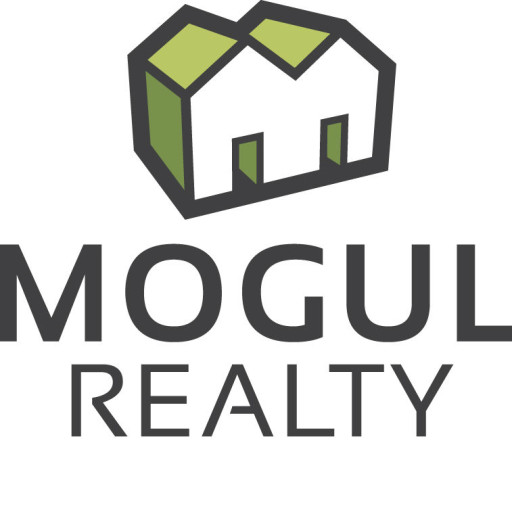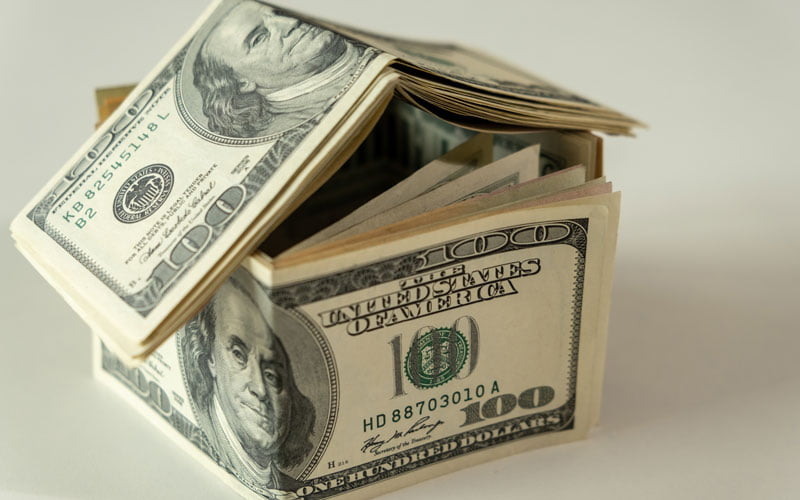There are a few key numbers to look at when analyzing an investment property.
If there was only one, well that’d of course be price. Being more technical, however, requires a few more than one, and what you use will depend on your strategy.
My investing focus is buy and hold rental properties, so above all I’m looking for cash flow from my investment properties. I invest to pull steady income from my properties — there are other plays, but they tend to involve more risk. Along with cash flow there are a few other indicators that help me judge the overall quality of the property, and there are also a few bits of padding that I put into all the numbers I run to give myself a safety net.
Because of that safety net and the conservative way I approach running numbers to analyze potential investment properties my investments tend to carry less risk. I favor being conservative from the start; there are a lot of variables involved that can demolish your profits. Some security is only earned from experience, knowing what you can do for how much, knowing reasonable time frames, and so on, but every property can have surprises.
Let’s start with a few important terms and calculations:
Operating Expenses = Utilities, Repairs, Taxes, Insurance, Vacancy, Management (All Except Mortgage)
Cash Flow = Gross Income – Total Expenses
NOI (Net Operating Income, usually annualized) = Gross Income – Operating Expenses
Purchase Cap Rate = NOI / Purchase Price
Pro Forma Cap Rate = NOI / Total Purchase Costs (Price + Closing Costs)
Property Value = NOI / Pro Forma Cap Rate
Cash on Cash ROI (Return on Investment) = Annual Cash Flow / Downpayment
The key number is cash flow since that is the rough amount of income the property produces each month. If the property doesn’t cash flow none of the other metrics will magically be good, either.
To get cash flow we first have to know our NOI. This part of the calculation is where I put in my safety net: Even if I’m going to self-manage I include a management fee (10% of gross rents is average for St. Louis) so that, if I decided I wanted to hire a managing company I have budgeted for that possibility already. In addition to that, while the property might have 100% occupancy when you’re looking at it, the average vacancy for south St. Louis is also at about 10%, which I include in my analysis. The other safety net is my repairs figure, which I also set at 10% of gross rents, same as my management and vacancy fees. If a building needs rehab that amount gets included in the purchase price in the loan amount. I take the repair fund’s 10% out of gross rents each month and put it into what’s called a sinking fund so that, whenever repairs are needed, I have cash available to deal with the expense. To start that fund I inject $5,000 into the sinking fund immediately. My sinking funds for 4-family properties max out at $15,000 since that’s enough for almost any major repair a 4-family would need (roof, plumbing, etc). This keeps you from going out of pocket for sudden repairs, or, worse, critical repairs not getting done because there’s no liquid funds set aside to fund them. It’s irresponsible to not have a sinking fund as a landlord.
Note: Even though I own a property management company I run my numbers as if I were paying for management since I manage through my company. In evaluating and managing I treat my client’s properties the same as my properties, so the numbers are also the same. Treating myself as a client also lets me double-check my services since I evaluate my management like an owner would.
For buy and hold rental properties I don’t spend much time considering the ARV (after rehab value) of the building since that’s only realized during a sale. I call that the icing on the cake — if you count on that entirely to make money you’ll be spending money until you do sell the building. I don’t buy buildings to lose money each month, so that’s a very different strategy, and it’s inherently more risky.
To figure out how these numbers actually work and influence my decision I’ll give you three examples. The first is a hypothetical property with easy numbers that we’re buying in cash. The following two are real world numbers from actual properties in St. Louis.
Property #1: $95,000 4-family, all-cash purchase, $5,000 in repairs for a total cost of $100,000. $500 per unit for a total of $2,000/month in rents with $1,000/month in expenses.
Cash Flow = $1000 (Gross Income – Total Expenses)
NOI = $12,000 (Gross Income – Operating Expenses; no mortgage so operating expenses are the same as total expenses)
Cap Rates = Pro Forma: 12% Purchase: 12.6% (NOI / Total Purchase Costs or Purchase Price)
Property Value = $100,000 (NOI / Pro Forma Cap Rate)
Cash on Cash ROI = 12% (Annual Cash Flow / Downpayment)
What do those numbers tell you about this property? First, that it’s a moneymaker. The cash on cash ROI is the same as the cap rate because we’re not using leverage, so the down payment for that calculation is the entire price of the property and the cash flow is the same as the NOI since there’s no mortgage payment.
In this first example you can see how leverage gives your returns a boost for the actual money you’re putting into the investment. If we used leverage for this property (assuming a 20% down, 5% interest 30-year loan, giving us $20,000 cash down, a loan amount of $80,000 and a monthly payment of $537) our cash on cash ROI jumps to 27.7%, though our monthly cash flow would decrease to $463. The advantage is, of course, since you’d have $100,000 total to invest you’d have $80,000 left to invest in other properties, which would theoretically let you get 4 more properties with the same downpayment. Taking a more leveraged position and acquiring 5 total properties with similar cash flows would net you about $2315/month instead of clearing the $1000 in the single property from an all-cash purchase.
Let’s go more in-depth and do a complete walkthrough of a real-world example:
Property #2: $135,000 4-family building. No repairs, closing costs are $3,900 for a total cost of $138,900. The rents for the building are $550, $550, $500, $450. The loan amount will be $97,500 with a $37,500 downpayment, amortized over 30 years at 5% with a monthly payment of $523.40. Expenses each month are $899.75.
The monthly income is the total of the rents, which is $2,025. Total monthly expenses are $1,423.15, the sum of mortgage costs and operational costs (taxes, utilities: gas, water, sewers, trash, insurance, vacancy, repairs, management and any other costs). Annualized, our gross income is $24,300 and our annual operating expenses are $10,797.
Our cash flow is $601.85 each month. ($2025 – $1,423.15; Gross Income – Total Expenses)
Our annual cash flow is $7222.20. ($601.85 x 12 months)
So, NOI = $13,503 ($24,300 – $10,797; Gross Annual Income – Annual Operating Expenses)
Our capitalization rate, or cap rate, is a measure of the percent return on an all-cash investment. This metric doesn’t consider the mortgage; it’s an overall indicator of the return on investment for the property.
There two kinds of cap rates, the “Pro Forma Cap Rate” and the “Purchase Cap Rate”. The Pro Forma uses the actual total cost, and the purchase uses just the purchase price without including closing costs or repairs. The cap rates for this property would be:
Cap Rate = 10% ($13,503 / $135,000; NOI / Purchase Price)
Pro Forma Cap Rate = 9.72% ($13,503 / $138,900; NOI / Total Cost)
The property value is something worth calculating since we’re using an investor-specific formula that lets you know if you’re in the right ballpark for price based on expenses and income. This calculation uses NOI since it is sometimes used in cash purchases, so we don’t include mortgage costs in our expenses.
Property Value = $138,919.75 ($13,503 / 9.72%; NOI / Pro Forma Cap Rate)
Leverage is one of the most powerful facets of real estate investing. By putting less cash into one property you can acquire more properties and extend your returns compared to putting all your money in one property. Since cash is king, an important metric is the Cash on Cash Return on Investment. This metric tells you your ROI on the actual cash you put into the property. If we check, our annual cash flow is $7,222.20 and our downpayment was $37,500.
Cash on Cash ROI = 17.44% ($7,222.20 / $37,500; Annual Cash Flow / Downpayment)
The takeaway from these numbers is that to achieve a similar or better return on investment in anything else, be it bonds, stocks, or another property, you’d want it to yield 17% interest or more on the cash you’re putting in. Comparing the cash on cash ROI to the cap rate gives you a good understanding of the power of leverage — that extra 7% ROI comes from our ability to take out a loan to acquire the property.
Your turn: Calculate these numbers yourself and see whether you think the property is worth investigation. They’re also taken from a real property in St. Louis, and we have all the answers down below.
Property #3: $130,000 4-family, no repairs, $3,900 closing costs for a total project cost of $133,900. $500/unit rents for a total of $2,000/month and $855.98/month in expenses. 20%, $26,000 downpayment, $104,000 30-year loan at 5% with a monthly payment of $558.
Work out your answers and highlight the section below to check them.
Cash Flow = $586.02
NOI = $13,728.24
Purchase Cap Rate =10.5%
Pro Forma Cap Rate =10.2%
Property Value = $134,590.60
Cash on Cash ROI = 27%
Looking at the cash on cash ROI, this is clearly a property that’s worth looking at. But it’s important to remember that these numbers are a signpost on your way to a destination — they’re not always exactly right, especially when unexpected repairs come up (which is often). Being conservative here helps ensure that you’ve got padding to stay profitable. As you gain more experience and learn your market better you’ll know how the numbers tend to play out in reality.

